Learning the signs that clearly show when to repot a peace Lily is important to ensure it stays healthy and thriving for long!
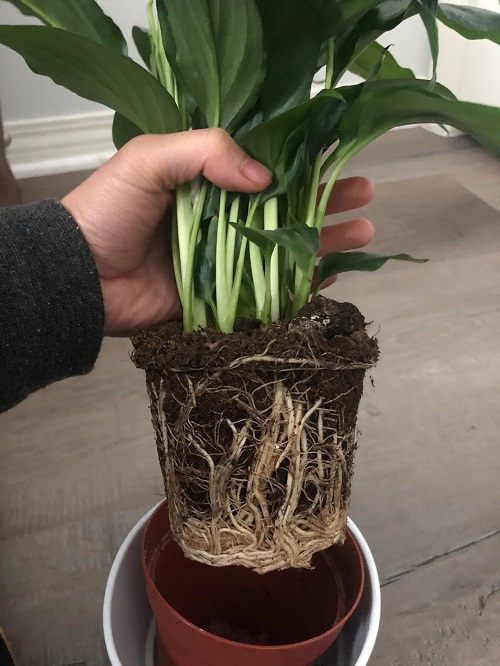
Peace Lilies actually stand by their name with those beautiful white spathes and an ability to purify the indoor air. However, it comes with its set of challenges that also include repotting it every few years!
Why Repotting Peace Lily is Essential?
As a plant matures, its expanding root system often outgrows the initial confines of its pot. Repotting gives these roots a chance to spread into fresh, nutrient-rich soil—an important refresh as the old mix likely lacks the vital nutrients needed after prolonged use.
If not repotted, Peace Lilies can become root-bound, a state where the crowded roots can hardly take up water and nutrients. This can seriously hamper their growth and overall health. Repotting invigorates the plant by giving its roots room to breathe and grow, enhancing it’s vitality and ensuring it continues to flourish.
When to Repot a Peace Lily?
1. The Pot is Full of Too Many Pups
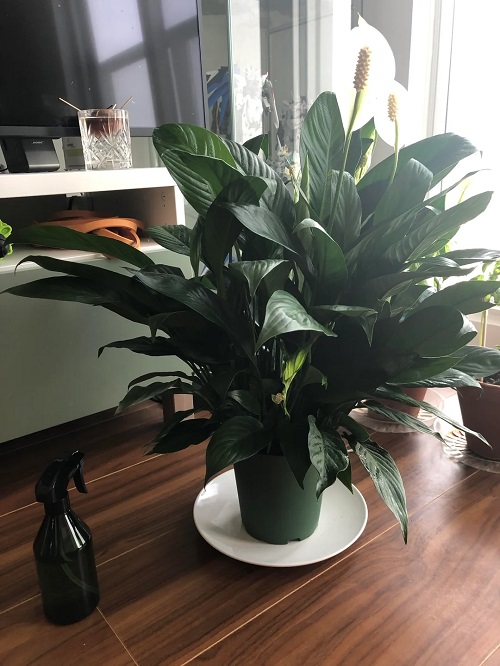
While fuller plant growth with many pups growing from the sides is the goal of most plant parents, there’s more to what meets the eye. Too many pups surrounding the mother plant means the plant is survival mode, and the root system is overly cramped down there.
You may have your plant looking all lush and green for a few days in this condition, but soon, it’ll show signs like yellow leaves or stunted growth due to a lack of nutrients in the medium.
2. Stunted Growth
On the other hand, if the plant seems to lack new growth even in its peak growing season despite proper care, chances are its current pot no longer provides enough room or nutrients. This happens when the plant has used up the available nutrients in the soil or when the roots have filled the pot, restricting further growth.
3. Unhealthy Appearance
Peace lilies are famed for their shiny leaves, and a sudden loss in their beauty can be alarming. Yellowing leaves, drooping, or a generally lackluster appearance can be signs that the plant is stressed in its current environment.
This mostly happens due to root-bound conditions where the roots don’t have enough space to function properly and look unhealthy because of poor nutrient uptake from depleted soil.
4. Soil Drying Fast
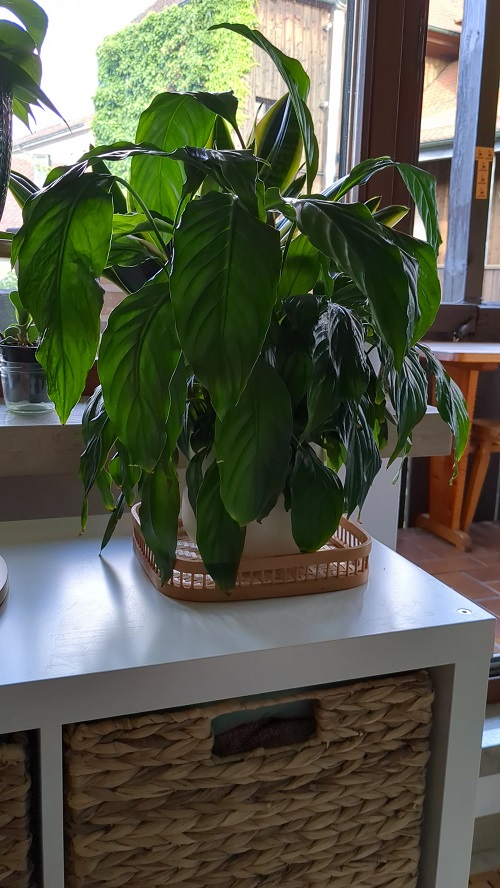
When a plant outgrows its pot, its roots can fill up so much space that there’s hardly any room left for the soil, which means less soil to hold onto water. This makes the soil dry out faster than usual because the extensive root system absorbs moisture more quickly than the limited soil can replenish it.
5. Roots Appearing on the Soil Surface or Coming Out from the Drainage Hole
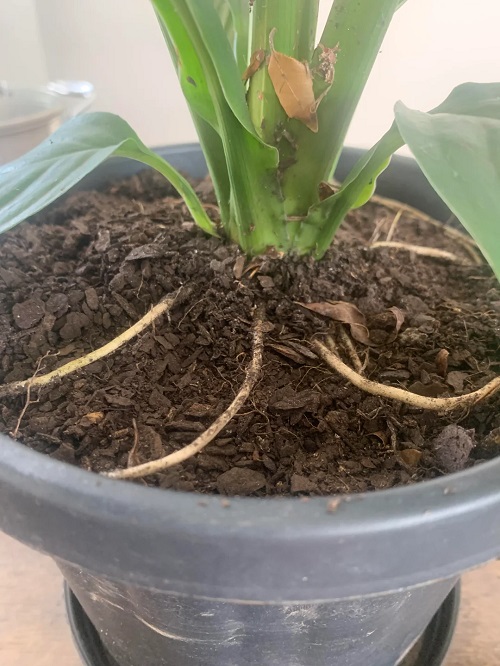
An evident sign of the plant outgrowing its current home is its roots peeking from here and there. They are mostly seen coming out from the drainage holes and might also peek from the soil surface if the medium is overly compact. When there isn’t enough room inside the pot for the root system to expand, it does that in its own ways!
6. Cracked Container
If you aren’t quite messy and don’t drop your pots every now and then, a cracked pot is an indicator of an outgrown plant. The next stage to the roots peeking from the soil surface is them spreading from the sides, hence exerting pressure on the pot, which may lead to cracks from the bottom.
Right Time for Repotting a Peace Lily
Spring is the best time to repot a Peace Lily because it coincides with their growth spurt, reducing the likelihood of shock from transplanting. However, if your plant is visibly struggling—perhaps it’s become too cramped in its current pot—it’s okay to repot at any time of the year.
How to Repot a Peace Lily?
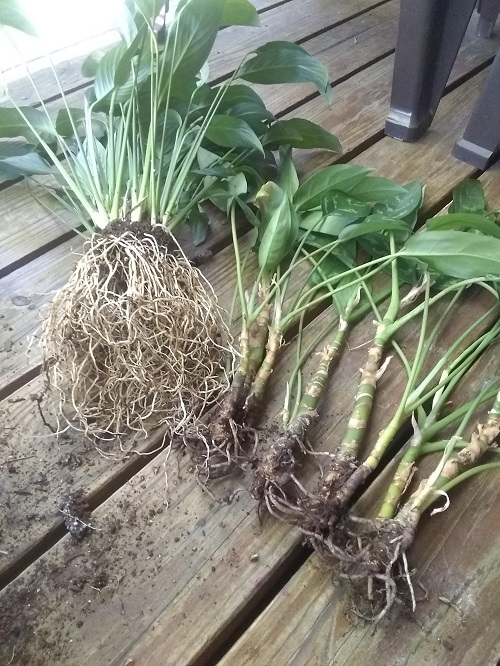
- Start by removing any dead flowers or leaves. This helps the plant focus its energy on reestablishing itself in its new pot.
- Choose a pot that’s about 2 inches larger than the plant’s root balls to give it plenty of room to grow. It should also have good drainage holes to prevent water from sitting at the bottom. Make sure your new pot has drainage holes.
- Mix the potting soil with perlite or vermiculite at a 3:1 ratio and set it aside.
- Gently tip the existing pot sideways and ease the plant out. Be careful not to pull too hard to avoid damaging the roots.
- Look for any signs of rot or damage and trim as needed. If the roots are tightly bound, gently tease them apart to encourage them to spread out in the new soil.
- Place a base layer of soil mix in the new pot to ensure that when you add your plant, it sits at the same soil level as before.
- Set the plant in the center of the new pot and fill it with more soil mix. Tap the pot gently to settle the soil and eliminate any air pockets.
- Give your Peace Lily a thorough watering right after repotting to help settle the soil and hydrate the roots. Water should flow freely from the drainage holes, but be sure not to overwater.






